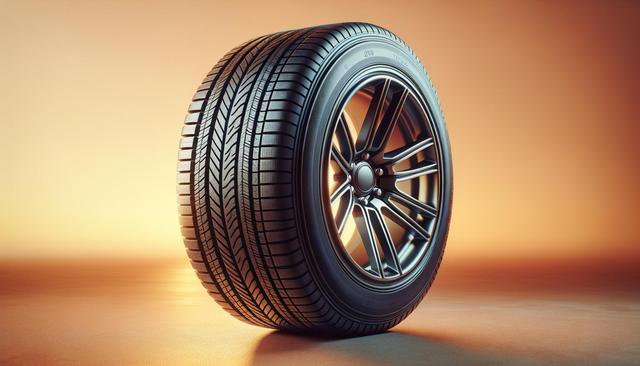The Importance of Choosing the Right Tire
Tires are one of the most vital components of any vehicle, directly affecting safety, comfort, and performance. A tire’s design, tread pattern, and composition influence how your vehicle handles different road conditions. Whether you are navigating wet highways, dry city streets, or rugged off-road terrain, the right set of tires can make a noticeable difference. In this article, you will find out how to get recycled tires, learn about the types of tires, how to choose the right ones and how they affect your driving style. Choosing tires without considering your driving habits or the environments you frequent can lead to reduced fuel efficiency, uneven wear, and even potential safety hazards.
When selecting tires, it’s crucial to consider factors such as climate, average mileage, vehicle load, and terrain. For instance, someone living in a snowy area will benefit from winter tires with deeper treads and softer rubber compounds, while urban drivers might opt for all-season tires that provide a balance of performance and longevity. Understanding your needs ensures a choice that aligns with both your driving style and safety expectations.
Different Types of Tires Explained
There are several tire categories designed for specific purposes. Knowing what each type offers can help you make a more informed decision. In this article, you will find out how to get recycled tires, learn about the types of tires, how to choose the right ones and how they affect your driving style. Here is a breakdown of the most common types:
- All-Season Tires: Ideal for moderate climates, combining features of both summer and winter tires.
- Summer Tires: Designed for high performance in dry and wet conditions but not suitable for snow or icy roads.
- Winter Tires: Made with special compounds to remain flexible in cold temperatures, offering superior traction on snow and ice.
- Performance Tires: Built for high-speed stability and superior handling, often used in sports vehicles.
- Off-Road Tires: Equipped with aggressive tread patterns to handle mud, dirt, and rocky terrain.
Each of these types comes with trade-offs in terms of durability, fuel efficiency, and price. Understanding the differences helps you choose a tire that complements your vehicle and usage patterns.
How to Choose the Right Tire for Your Needs
Choosing the right tire involves more than just fitting the correct size. Your driving behavior, regional climate, and road conditions all play a critical role. In this article, you will find out how to get recycled tires, learn about the types of tires, how to choose the right ones and how they affect your driving style. Begin by checking your vehicle manufacturer’s recommendations, usually found in the owner’s manual or on the driver’s side door frame.
Here are some key factors to consider:
- Driving Style: Aggressive drivers or those who frequently drive at high speeds may benefit from performance or summer tires.
- Terrain: Rural or mountainous terrain often requires tires with deeper treads and stronger sidewalls.
- Weather Conditions: If you live in an area with heavy snow or rain, consider winter or all-season tires with good water dispersion features.
- Fuel Efficiency: Some tires are designed to reduce rolling resistance, thereby improving fuel economy.
Once you’ve identified your needs, compare tire models within your budget and read reviews from other drivers with similar use cases. A thoughtful approach will ensure that your chosen tires deliver both performance and safety.
The Role of Recycled Tires in Sustainability
With growing environmental awareness, recycled tires are becoming a popular option for eco-conscious consumers. In this article, you will find out how to get recycled tires, learn about the types of tires, how to choose the right ones and how they affect your driving style. Recycled tires can be retreaded or repurposed, reducing landfill waste and conserving raw materials. Retreaded tires undergo a process where the worn tread is replaced, extending the life of the tire shell and offering significant cost savings without compromising safety.
Here are some benefits of choosing recycled tires:
- Cost-Effective: Generally priced lower than new ones.
- Environmentally Friendly: Reduces the number of tires that end up in landfills.
- Quality Control: Many recycled tires meet strict safety standards and are thoroughly inspected before resale.
To obtain recycled tires, you can visit local tire shops, auto salvage yards, or specialized dealers that focus on sustainable products. Always ensure that they come with a quality certification or warranty to verify their safety and reliability.
How Tires Influence Your Driving Experience
Tires significantly affect how your vehicle responds to acceleration, braking, cornering, and even noise levels. In this article, you will find out how to get recycled tires, learn about the types of tires, how to choose the right ones and how they affect your driving style. The wrong type of tire can lead to a harsh ride, slower braking response, or poor traction during adverse weather conditions.
Different driving styles benefit from different tire features:
- Highway Drivers: Look for tires with low rolling resistance and high durability for better fuel efficiency and longevity.
- City Drivers: May require tires with enhanced grip and shorter braking distances for stop-and-go traffic.
- Sport Drivers: Need tires that provide maximum traction and stability at higher speeds.
- Off-Road Enthusiasts: Should opt for rugged tires that offer better resistance to punctures and improved grip on uneven surfaces.
Regular tire maintenance—such as rotation, alignment, and pressure checks—also plays a crucial role in ensuring consistent performance and extending tire life. Understanding how your tires interact with your driving style can help you make informed decisions and enhance your overall driving experience.






